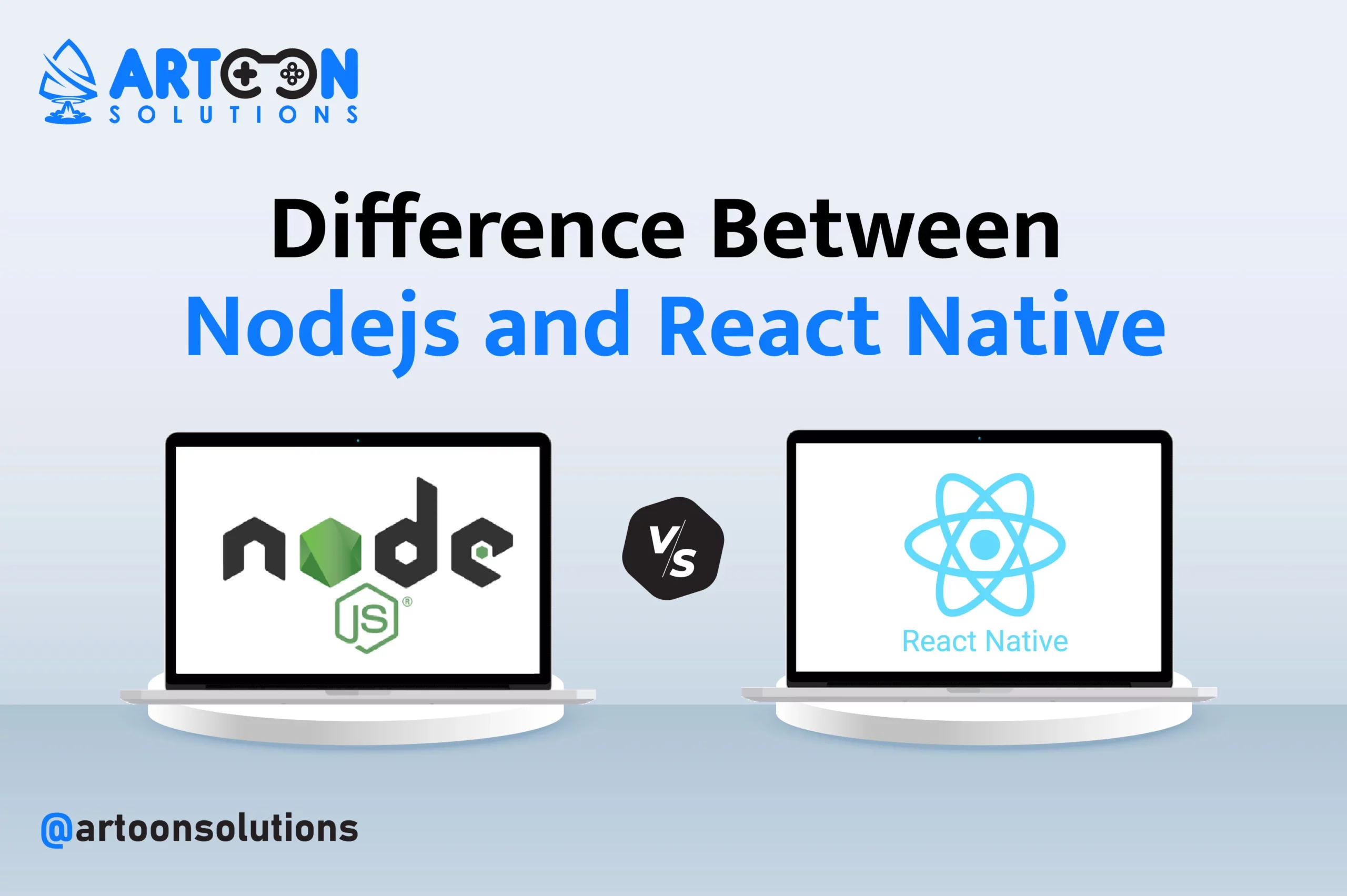- HR:+91-879-9184-787
- Sales:+91-908-163-7774

If you’re navigating the world of web and mobile development, you’ve likely come across Nodejs and React Native. Understanding the differences between these two powerful technologies is crucial for making the right choice for your projects. Node.js is a server-side platform that uses JavaScript to build fast, scalable network applications, while React Native Mobile Application Development is a popular framework for developing cross-platform mobile apps. By learning about their unique features, use cases, and benefits, you can make informed decisions and leverage these tools to their fullest potential. In this post, we’ll break down everything you need to know about React Native and Nodejs, helping you choose the right technology for your needs.
Node.js is an open-source, server-side runtime environment that lets you use JavaScript for backend development. It was created in 2009 by Ryan Dahl to build scalable network applications. With Node.js, you charge your server-side development with features like non-blocking I/O, event-driven architecture, and a single-threaded model, making it highly efficient and suitable for handling multiple simultaneous connections.
Key features of Node.js include its fast performance thanks to the V8 engine, an extensive package ecosystem via npm, and the ability to handle asynchronous operations seamlessly. You’ll find Node.js perfect for building real-time applications, such as chat apps and online gaming, as well as for creating APIs and microservices.
Popular applications using Node.js include LinkedIn, Netflix, and Uber. If you aim for high scalability and performance in your server-side projects, Node.js is a tool you should consider.
Read More: React Native Vs PWA
React Native is a popular framework made by Facebook. It helps you build mobile apps using JavaScript and React. It’s designed to let you create apps for both iOS and Android platforms using a single codebase, saving you time and resources.
React Native was launched by Facebook in 2015. It was created to solve the challenges of developing mobile apps that deliver a seamless user experience across different platforms. React Native allows you to use React and native platform capabilities, ensuring high performance and a native look and feel.
Key Features
Use Cases and Popular Applications
React Native is ideal for various applications, from startups to large enterprises. You can build anything from simple apps to complex solutions with it. Some popular applications built with React Native include Facebook, Instagram, Airbnb, and Uber Eats. These apps leverage React Native to deliver high-quality, native experiences to their users while maintaining a unified codebase.
By choosing React Native, you’re opting for a flexible, efficient, and widely supported framework that can help you bring your mobile app ideas to life.
Also Read: React Native Pros and Cons
Purpose and Functionality
Programming Languages
Development Environment
Performance and Scalability
By understanding these key differences, you can decide whether Node.js or React Native is the right choice for your project. Whether you’re building a scalable server or a high-performing mobile app, knowing when to use Node.js and when to use React Native will make your development process more efficient.
Node.js
React Native
When comparing React Native Node js, think about your project’s requirements. Node.js is your best bet for server-side tasks, while React Native excels in mobile app development. Using the right tool for the job can streamline your development process and lead to better outcomes.
React Native Pros and Cons
Node.js Pros and Cons
When deciding between Nodejs and React Native, consider these pros and cons to ensure you choose the right tool for your specific needs. Balancing the strengths and limitations of each can help you create efficient and high-performing applications.
Scenarios Best Suited for Node.js
Scenarios Best Suited for React Native
Decision-Making Factors
By understanding the strengths of Nodejs and React Native, you can make informed decisions that align with your project needs, team capabilities, and target platforms. Choosing the right tool will enhance your development process and final product.
At Artoon Solutions, we specialize in React Native mobile application development, delivering high-quality, cross-platform apps that seamlessly run on both iOS and Android devices. Our experienced team uses React Native to ensure that your app not only looks great but also performs flawlessly across different platforms. Whether you’re looking to build a new mobile app from scratch, refine an existing one, or develop a Minimum Viable Product (MVP), we have the expertise to bring your vision to life. Reach out to us to discuss how we can help you create a powerful, efficient, and engaging mobile application tailored to your needs.
Understanding the key differences between Nodejs and React Native is crucial for your project’s success. Node.js excels in server-side, real-time applications and scalable network services, while React Native is perfect for cross-platform mobile app development with a unified codebase. Choosing the right technology depends on your project requirements, team expertise, and target platforms. By making an informed decision, you’ll ensure a smoother development process and a high-quality final product. Consider your specific needs carefully, and you’ll leverage the strengths of either React Native Node js to achieve the best results. If you’re looking to build a mobile app, hire React Native app developer to take full advantage of its cross-platform capabilities.
While Node.js isn’t required to use React Native, it’s often used for managing packages and running development tools.
React Native and Nodejs serve different purposes: Node.js is best for backend development, while React Native is designed for mobile app development.
Node.js is a backend technology used for server-side development.
React Native is a frontend technology used for building mobile app user interfaces.
Node.js is used for building scalable network applications, APIs, and server-side applications.